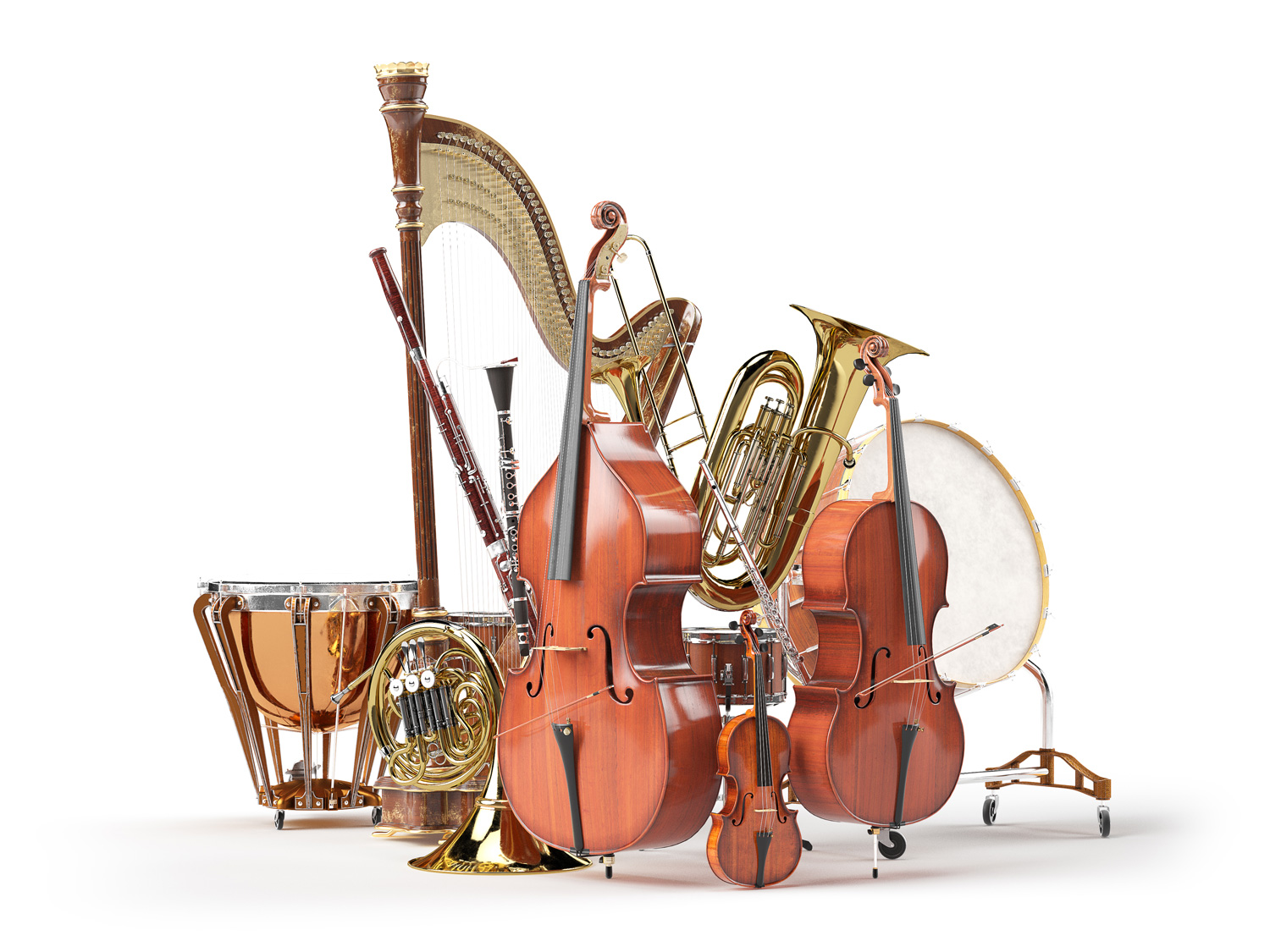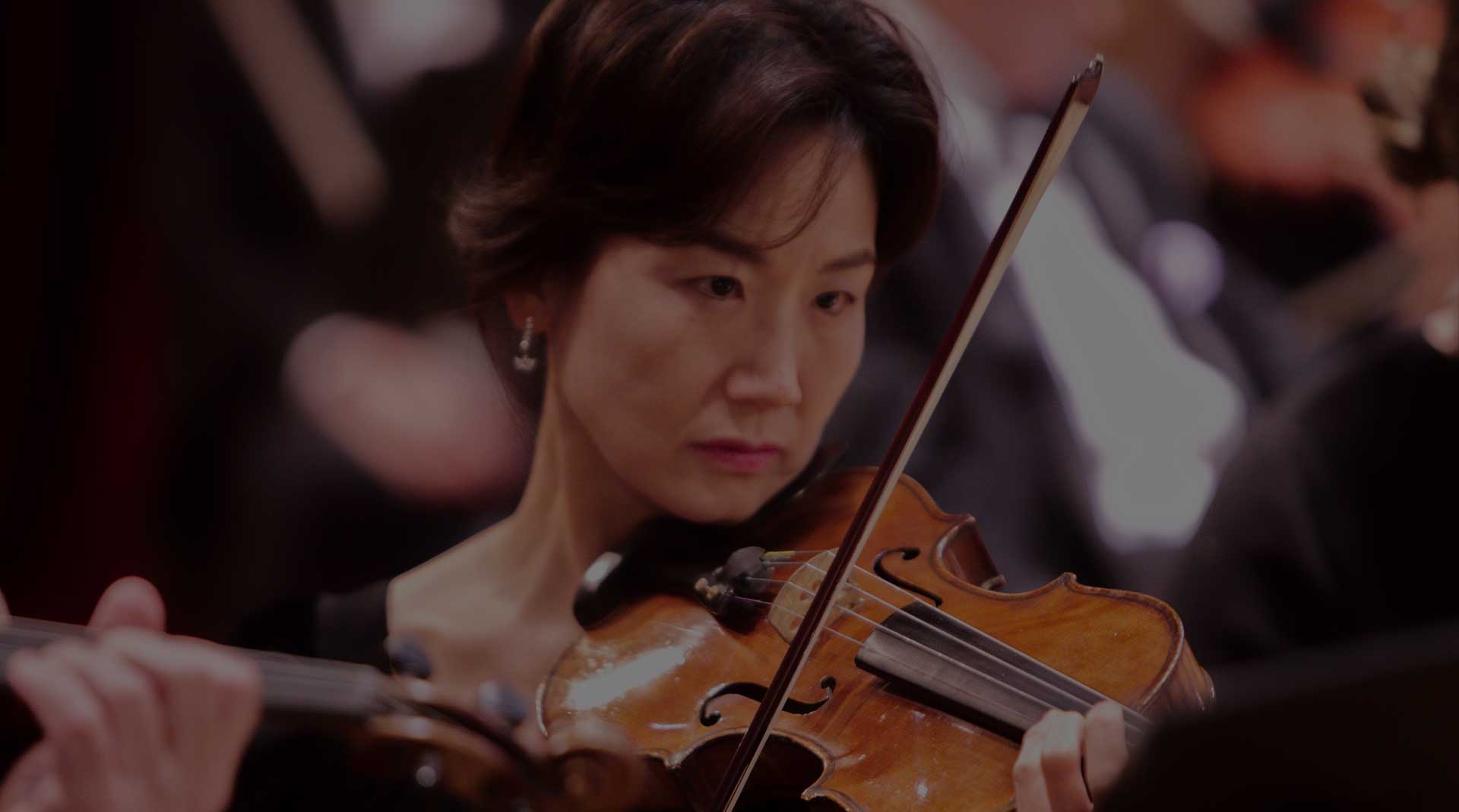
The Instruments of the Orchestra I: Families
Musical instruments are categorized by families. It is a common misconception that these groups are based on the materials from which an instrument is made. This stems from the family names like “Woodwind” and “Brass”. However, the families are actually based on how the instruments produce sound. Traditionally, there are four families of instruments; Strings, Woodwinds, Brass (sometimes “Brasswind”), and Percussion. More recently however this has been expanded to include Keyboards and /or Electronic instruments. For the sake of this series, we will use five families: Stings, Woodwinds, Brass, Percussion, and Electronic Instruments. This is because classifying instruments as “keyboards” does not adhere to the traditional method of classification by sound production, and, as we will see, any keyboard instrument can be neatly fit into the other five categories.
The Strings: These are instruments which produce their sound by bowing or plucking a string that has been stretched over a resonating chamber. This family includes, but is not limited to the orchestral strings (violin, viola, cello, string bass), the guitars and lutes, harps, zithers, dulcimers, and the harpsichord (which plucks its strings via a mechanical action operated from a keyboard). The string family can be traced back to ancient times with depictions of harps and lyres in Ancient Greek, Roman, and Mesopotamian art, and extant examples from Ancient Egypt. Bowed strings can be traced back to the Medieval period when, along with the lute, they were brought back to Europe by crusaders.
The Woodwinds: Woodwinds produce sound by either passing air over a hole in the body of the instrument, a “fipple” (a beveled hole), or a reed. Instruments in this family include flutes, oboes, clarinets, bassoons, saxophones, pipe and reed organs, recorders, bagpipes, the calliope, harmonicas, whistles, etc. The remains of a small bone flute found in Paleolithic cave dwelling deposits date the woodwind family back some 40,000 years. Reed instruments can be traced back at least to the Ancient World.
The Brass: Trumpets, cornets, bugles, trombones, French horns, euphoniums, tubas, a number of other less well known horns, as well as folk and ritual instruments like the shofar, the kudu horn, hunting horns, post horns, and even conch shells, comprise the Brass family. Sound is produced when the player places their lips against a mouthpiece, or simply a hole in the instrument, and produces a buzzing sound. This family can also be found depicted in art from the Ancient World, and its presence in the form of the conch shell and various animal horn based instruments found in pre-industrial indigenous cultures may indicate a much earlier origin.
The Percussion: A percussion instrument is any instrument in which sound is produced by striking or scraping one thing against another. The most obvious examples of this are the various types of drum being struck by the hand or a beater (drumstick). Also included here are rattles, ratchets, bells and chimes, the triangle, cymbals, all the members of the xylophone group, hammered dulcimers, as well as a number of keyboards including the piano, celeste, and electric piano. The percussion family is probably the largest instrument family, as it can contain almost anything that can be struck or scraped to produce an audible sound. It is probably also the oldest instrument group, with origins lost in prehistory.
Electronic Instruments: There is an important distinction to be made here between electric and electronic. Electric instruments produce sound mechanically and simply use electricity rather than, or in addition to inherent resonance to amplify that sound. They can all be fit into one of the other families. The electric guitar for example, has plucked strings whose sound is then transferred to an amplifier and speaker via electronic pickups. The key here is that the sound is still initially produced by a vibrating string even if that sound is modified in some way by circuitry before ultimately reaching our ear. Electronic instruments by contrast, do not produce sound mechanically. Electrical circuits and switches send impulses to speakers causing them to vibrate at predetermined frequencies. Instruments in this groups include synthesizers, electronic keyboards and organs, and the Theremin among others. This distinction can be a little fuzzy on casual observation as many electronic instruments mimic the other families in the way the performer interacts with them. The player may use a keyboard or strike an electronic pad with drum sticks for example. Again, the key distinction here is that the only thing that actually vibrates is a speaker which is actuated by an electronic impulse, there is no string, reed, air column, or other part of the instrument that vibrates to produce the initial sound. This is the newest family of musical instruments dating from the early to mid-twentieth century.
Watch for future posts in this series about some instruments in each individual family, their history, and their role the orchestra.


